SEO Keyword Examples and When to Use Each Type
When you’re trying to figure out what are keywords in SEO, examples help greatly! Sitting down to make a list of keywords in research sounds like it should be simple, but during the process, uncertainty can often take over.
Are you choosing the right keywords? How many should you choose? And how do you use them?
In this piece, we’ll follow one marketer through their SEO keyword research journey, answering these questions along the way.
Meet Robin. Robin works for a B2B SaaS company that helps small businesses streamline and centralize their accounting and finance functions. Robin has been asked by the marketing director of the company to generate a business keyword list that will help the team achieve its goals.
No pressure, right? Armed with a keyword research tool, Robin sits down to get to work… but where do they start? Let’s find out.
How Do I Create an SEO Keyword List?
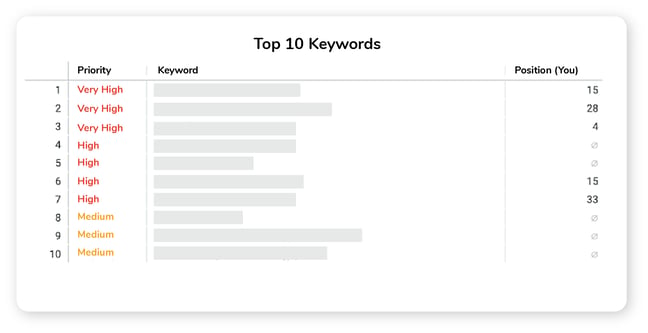 (DemandJump's Automated Keyword List Generator)
(DemandJump's Automated Keyword List Generator)
When it comes to the basics of how to create a keyword list, all Robin has to work from is the keyword lists they have encountered in the past. Looking back through the keyword list examples from past quarters, they see that some keywords are repeated while others fall off the lists.
“Should I reuse any of these?” Robin wonders. “Or should I start from scratch?”
Early on, Robin is already running into one of the necessary elements for creating a keyword list, which is insights into the current performance of the website and other marketing content.
Without understanding which keywords the site is already ranking for, it’s impossible to know which main keywords need to stay a priority, and which new ones might help move the needle even further.
What are main keywords? Also known as primary keywords, these are the key business services, products, and concepts that the company needs to communicate about.
In Robin’s case, the main keywords relate to accounting and finance, the functions of their employers’ SaaS platform.
Logging into Google Analytics, Robin spends some time looking at the traffic and search history, trying to divine which keywords are helping the company get the attention of users on search engines and how those are different from the keywords that work best on social media.
After an hour of poking around, they feel better equipped to choose which keywords need to stay a priority.
But that only results in a list of 5-6 basic keywords. “Small business finance and small business accounting are a great start,” Robin muses. But they also know that creating the keyword list is a bigger project than just looking at the site performance and continuing what is already working.
What SEO Keywords to Choose First?

The first keywords to choose are the ones that align most closely with the company’s services, products, and value propositions. In Robin’s case, some of the groundwork is already done, and they’ve seen which keywords from past lists are attracting the most traffic.
Robin chose to include the keywords that have historically been high-value in their new list for this quarter. But they also know the marketing goals have recently changed. Their employer started prioritizing SEO to attract more web traffic, and the Google Analytics dashboard shows that effort has been successful.
Now, Robin and their colleagues are working to create a content funnel that transforms site visitors into loyal customers.
“I know lots of visitors to the site could use our product,” Robin thinks. “But how can I choose the keywords that will reach customers at the moment they are ready to make a purchase?”
Robin realizes that their greater insight into the current state of the company’s SEO doesn’t chart a clear path to helping them choose the right new keywords. For that, Robin needs to pair their understanding of SEO with their understanding of the customer journey.
There are generally considered to be three phases of the customer journey, and there are different types of keywords that become relevant as customers move closer to a buying decision:
- Awareness: When customers are in the awareness phase, they have just become aware of their need or problem but haven’t yet settled on a solution. At this stage of the journey, users are trying to figure out what they need to know and what options are available to them. Businesses with the goal of growing awareness of their presence among potential customers will be especially interested in the keywords that are relevant in this phase. Customers are conducting informational keyword searches, asking questions, and taking notes.
- Interest or Consideration: Customers in the interest phase have done their research and identified some of the products or solutions they think can solve their problem. At this stage of the customer journey, the user now wants their instincts and potential trust and confidence to be confirmed. In this stage, customers are looking to be educated and have their questions answered, meaning content must be created that directly answers their questions and even engages with the offerings and value propositions of competitors.
- Decision: Once users have found the information they need and decided on the product or solution they want to purchase, the SEO game still isn’t over. In this stage of the journey, customers will still be looking for pricing, tips about negotiating a contract, and any other lingering concerns or questions that relate to making a specific purchase.
Robin knows their employer is setting goals for SEO improvement in the interest and decision stages of the customer journey. So, they focus their attention on those keywords first, looking for the questions and search phrases that reflect a buyer’s desire to learn more about what to look for in software or a SaaS vendor.
They are even lucky enough to find several keywords that include the company’s exact brand name!
But once the initial survey is done, Robin realizes they have collected over 50 keywords.
“Is this a situation where we want lots of options?” they hesitate. “Or, when it comes to SEO keywords, is less actually more?”
How Many SEO Keywords Should I Use?
Wondering about just how long to make their list, Robin turns to Internet message boards and marketing websites for some guidance. They learn that while each web page, blog, or piece of content should have one main keyword as its focus, longer keywords that are relevant in context should also be used on each page.
After their analysis, Robin decides to proceed with the following best practices in mind:
- One main keyword for the page title and URL.
- Three to five keywords to serve as page headlines.
They also know that keywords should be used in the sentences of the copy, but Robin is also confident in the quality of their written content. With a main keyword phrase like “small business finance,” they know that many of the keywords and questions that are relevant to their users will naturally appear in the copy.
However, Robin also remembers that the marketing director wants to write a few longer pieces of content that are 2,000 words or more since it was recently revealed that Google’s algorithm tends to prefer longer content.
“It would be much easier to write such long content with more keywords to go from,” Robin realizes and decides to source a few more long-tail keywords that are four words or longer. These highly specific questions and phrases will not only give great direction to the content writers but also align with the concerns and worries of their target audiences at the moment they turn to Google.
This will allow the content to achieve high ranking naturally, without the writers worrying about having to work in too many keywords or write content that doesn’t seem like it was really meant for humans at all.
Robin takes a step back to look at their entire list. They have the main keywords that it’s important to ensure are integrated on both the front-end and back-end of the website.
They have other relevant keywords that will make great blog titles and headlines. And, they have longer questions and phrases that provide the audience insights and context that bring the whole strategy to fruition.
Choosing the Best Business Keywords and Phrases
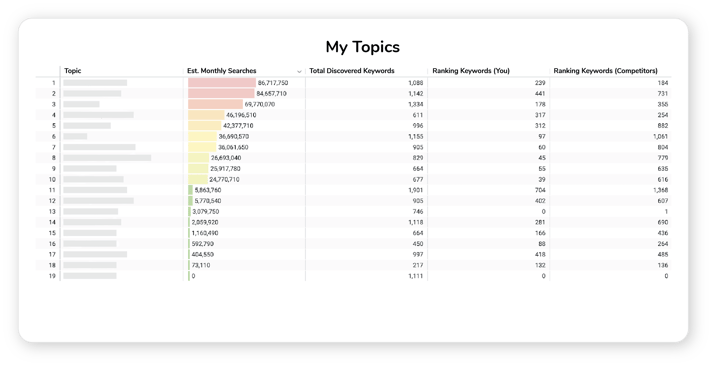 (DemandJump's Competitive Keyword View)
(DemandJump's Competitive Keyword View)
Yes, when it comes to choosing business keywords, examples are helpful. But let’s also circle back and summarize the high-level strategies and tips anyone can take away from Robin’s experiences.
- Start with Data: Keyword research works best when it is grounded in an understanding of a company’s current position in the market and in the search rankings. It’s also important to have strong goals, whether it’s growing brand awareness or getting more leads.
- Use Keywords of All Lengths: Different users search for information in different ways. Some will look up the two-or-three word phrases that align with a business’s core offerings, while others will have very nuanced questions, needs, and concerns. Make sure your keyword list includes options as short as two words and as long as five or more words.
- Keep the Audience First: Lastly, keyword research only makes sense when it’s considered from the perspective of the audience doing the searching. Whether you’re doing general research to launch a strategy for the first time or working to build on existing success like Robin, it’s important to think about what the audience is feeling and thinking when they approach the search bar.
Demand Jump: A One-Stop Tool for SEO Keyword Research
When doing SEO keyword research, you need a tool that can take you from research to results. DemandJump automates the keyword research process.
With one-click SEO content briefs for new content, recommendations for updating current content, and linking content to revenue generated with marketing attribution you are sure to see results.
Work smarter with automation tools designed to make content marketers look like rockstars.
Write content that ranks fast, and save time doing it - get started today!

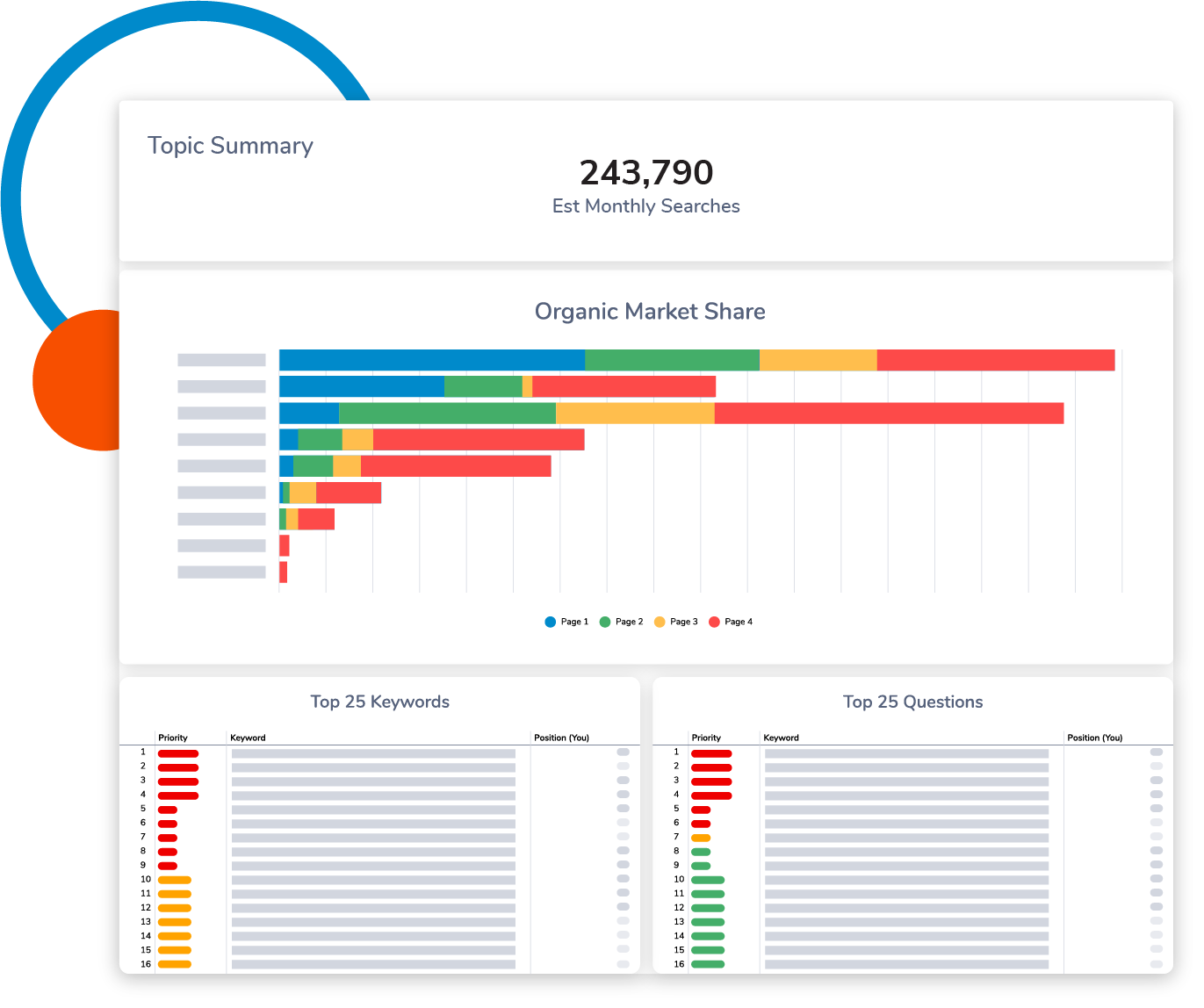
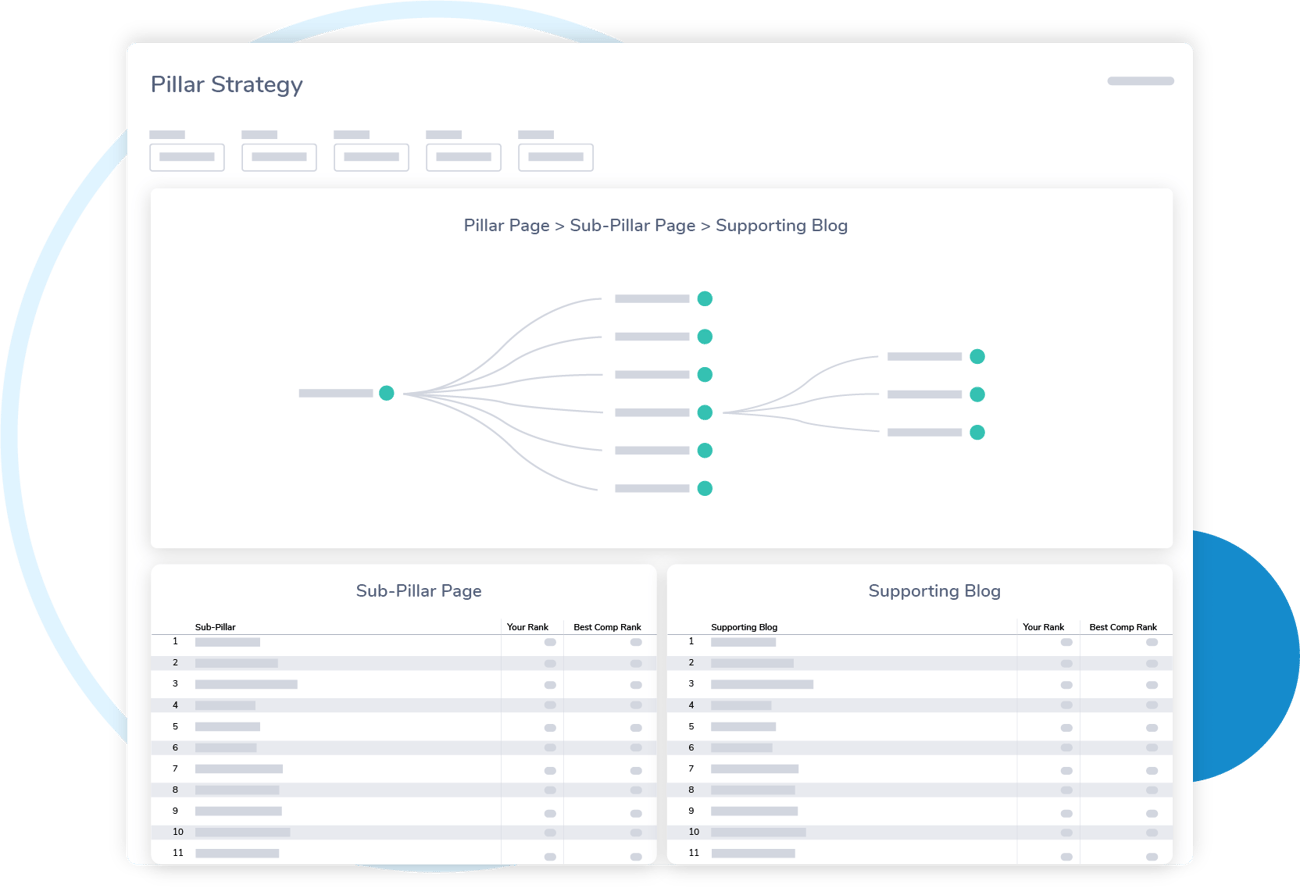
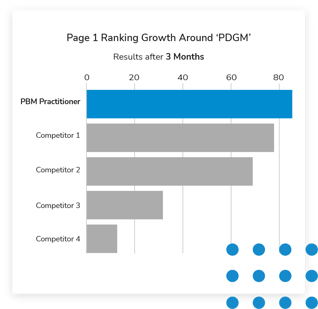







 (DemandJump's Automated
(DemandJump's Automated 
 (DemandJump's Competitive Keyword View)
(DemandJump's Competitive Keyword View)